The Ultimate Guide to Variegation in Houseplants: A Complete Overview
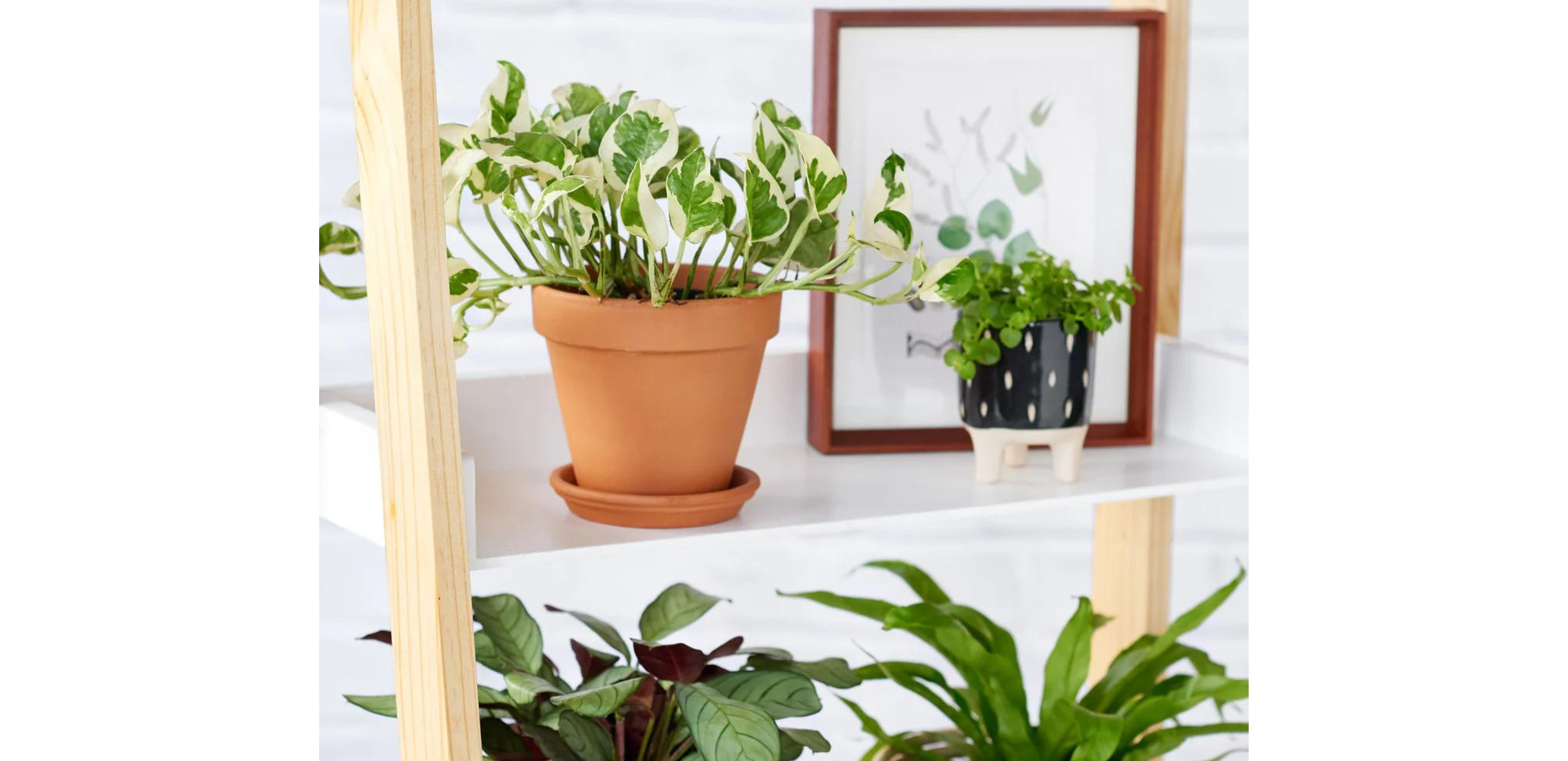
Discover the enchanting world of variegated houseplants, where foliage transforms into a canvas of captivating patterns and colours - tropical masterpieces. Collecting variegated plants with distinct streaks and patches of different colours on leaves, is gaining popularity among plant enthusiasts due to their irresistible allure and scarcity.
Join us on a journey as we investigate the magnetism of variegated plants, including their appeal and growing popularity among indoor gardeners. Prepare to be captivated by nature's magnificent works of art, which are suitable for any home or office setting.
What is Variegation in Houseplants?
Variegation in houseplants refers to the patterns and colours found in some parts of certain plants, such as in their foliage, that are often plain green. This striking feature arises for various reasons, including genetic mutations or environmental influences that change the normal creation of chlorophyll in plants, this is the pigment responsible for the green colour in plants.
In Short: Plants get their green colour from chlorophyll. When there's no pigment in the chloroplast, leaves turn white. This happens because of glitches in the plant's chloroplast-making process. These hiccups can pop up anywhere in the plant's DNA or just in certain spots.
By studying the science behind variegation, we can see how genetic changes, growing conditions, and cultivation methods all work together in complex ways to give rise to this phenomenon. Genetic mutations can happen on their own, which can change how the genes that make chlorophyll are expressed. Light intensity, temperature changes, and the availability of nutrients are further environmental factors that can affect variegation patterns in foliage.
These disruptions can cause areas of the leaf to lack chlorophyll, resulting in the appearance of various pigments such as anthocyanins or carotenoids, which produce colours ranging from white and yellow to pink and red. The Red Nerve Plant serves as an example of this.
The rarity of variegation adds to their allure, making them prized possessions among enthusiasts and collectors. While some variegated plants occur naturally, techniques like Tissue Culture (TC) enhance their likelihood, adding to their desirability and diversity. For example: Alocasia produced from TC are more likely to come out variegated. By subjecting plant tissues to controlled laboratory conditions, tissue culture techniques can induce genetic variations that can promote variegation.
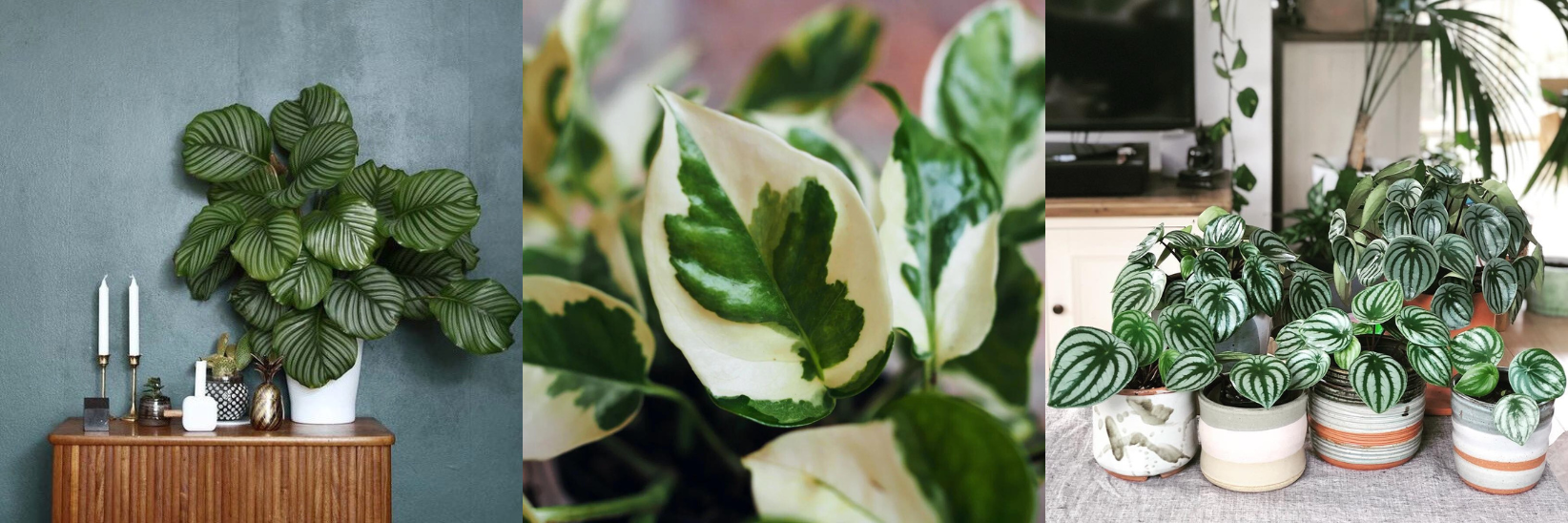
Why Do Plants Become Variegated in Nature: Unravelling the Mystery
As discussed above, a combination of genetic mutations and environmental factors is what causes variegation in plants. While the exact evolutionary reason for variegation is unknown, it is thought to provide some natural advantages. Variegated foliage, for example, can help plants adapt to their surroundings by providing camouflage, deterring herbivores, or increasing photosynthesis efficiency in low-light conditions.
Variegation is not found in all living things; plants are the most common examples. This phenomenon results from plants' unique biology, specifically their reliance on chlorophyll for photosynthesis. While colour variations in animals occur for a variety of reasons, variegation in plants is a specialised adaptation that demonstrates the plant kingdom's remarkable diversity and adaptability.
What Types of Variegation Occur in Houseplants?
Let's explore variegation in houseplants in greater detail, from edge-lined margins to scattered spots. Discover the unique patterns that make your indoor greens stand out! We will go into more detail about how each factor contributes to variegation in houseplants later, but first, let us look at the various types of variegation:
Marginal Variegation
Is characterised by white or coloured patterns along the edges or margins of leaves.
Plants with Marginal Variegation:

Central Variegation
A type of variegation is concentrated in the centre of the leaves and is usually surrounded by a solid green border.
Plants with Central Variegation:
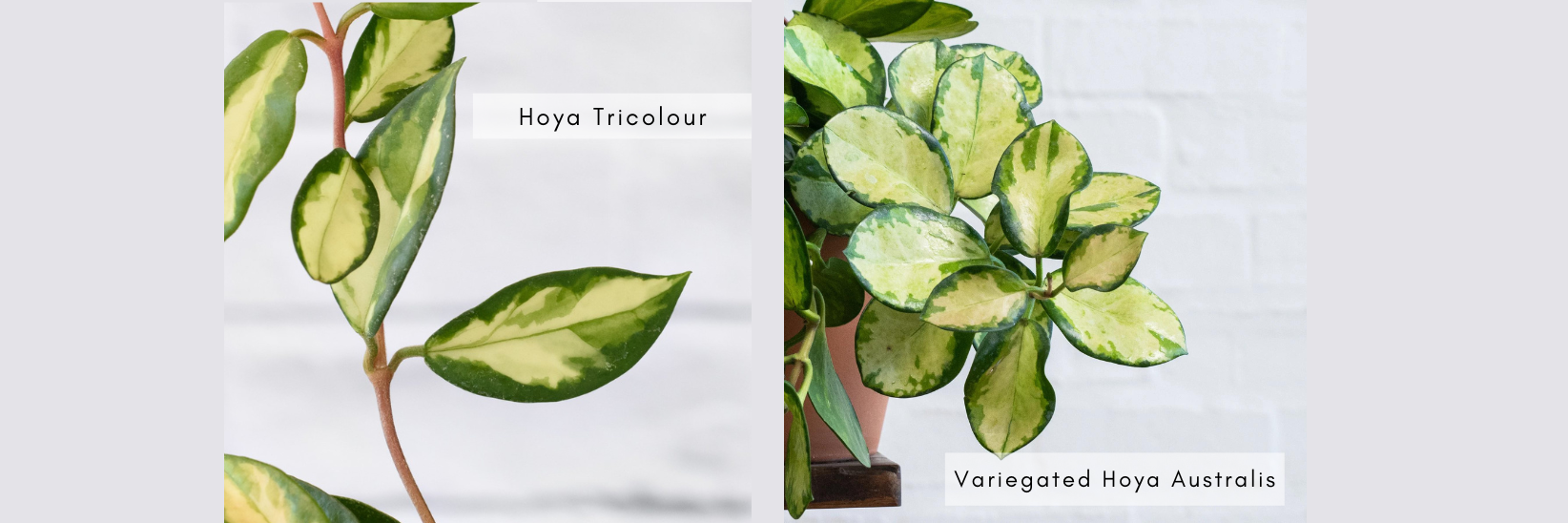
Mosaic Variegation
Irregular variegation patches or streaks that appear randomly on leaf surfaces.
Plants with Mosaic Variegation:
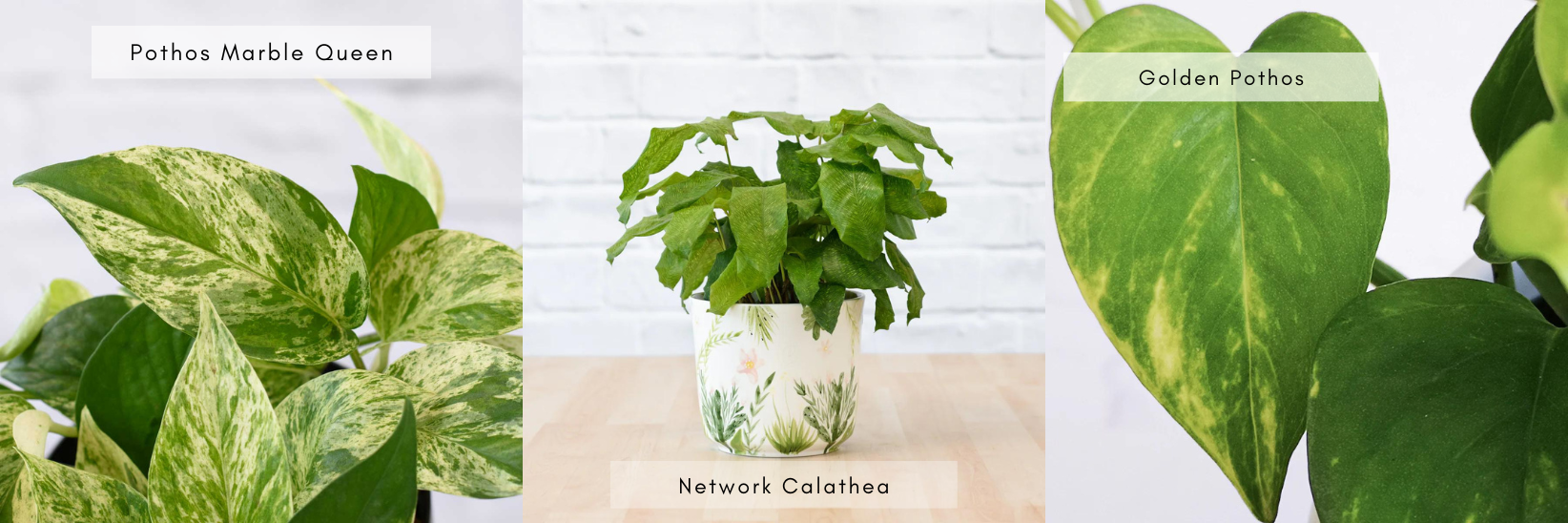
Sectorial Variegation
This type of variegation is the most sought-after by collectors because it produces the half leaf effect. This variegation appears in distinct sectors or sections of a leaf or plant.
Plants with Sectorial Variegation:
- Hoya Krimson Queen
- Philodendron Brasil
- Variegated Umbrella Plant
- The variegated Monstera
- Philodendron Pink Princess
- Syngonium Albo

Blotched Variegation
Large irregular patches of variegation or colour appear on the leaf surface.
Plants with Blotched Variegation:
- Chinese Evergreen - Maria
- Dieffenbachia - Alex
- Calathea Freddie
- Calathea Makoyana
- Croton Petra
- Ficus Tineke
- Hoya Pubicalyx
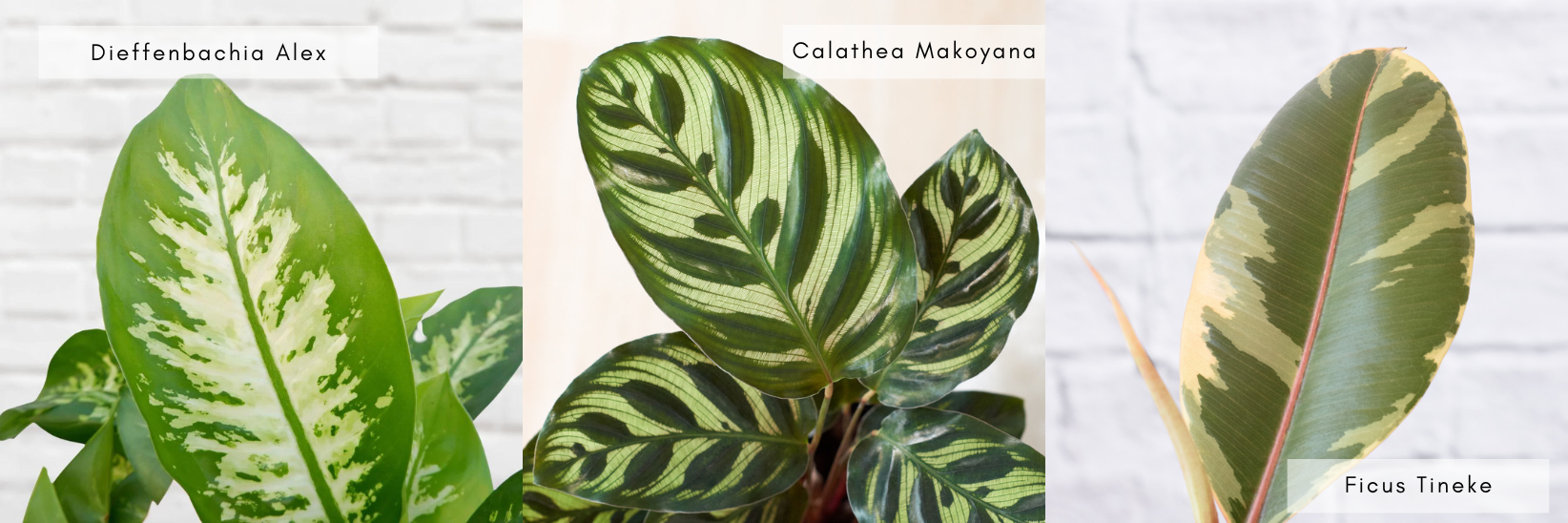
Striped Variegation
The leaves appear to have long stripes running the entire length of them.
Plants with Striped Variegation:
- Snake Plants (Mother in Laws Tongue)
- Prayer Plants (Maranta Leuconeura)
- Calathea Sanderiana
- Philodendron Birkins
- Zebra Calathea
- Calathea Majestic Star
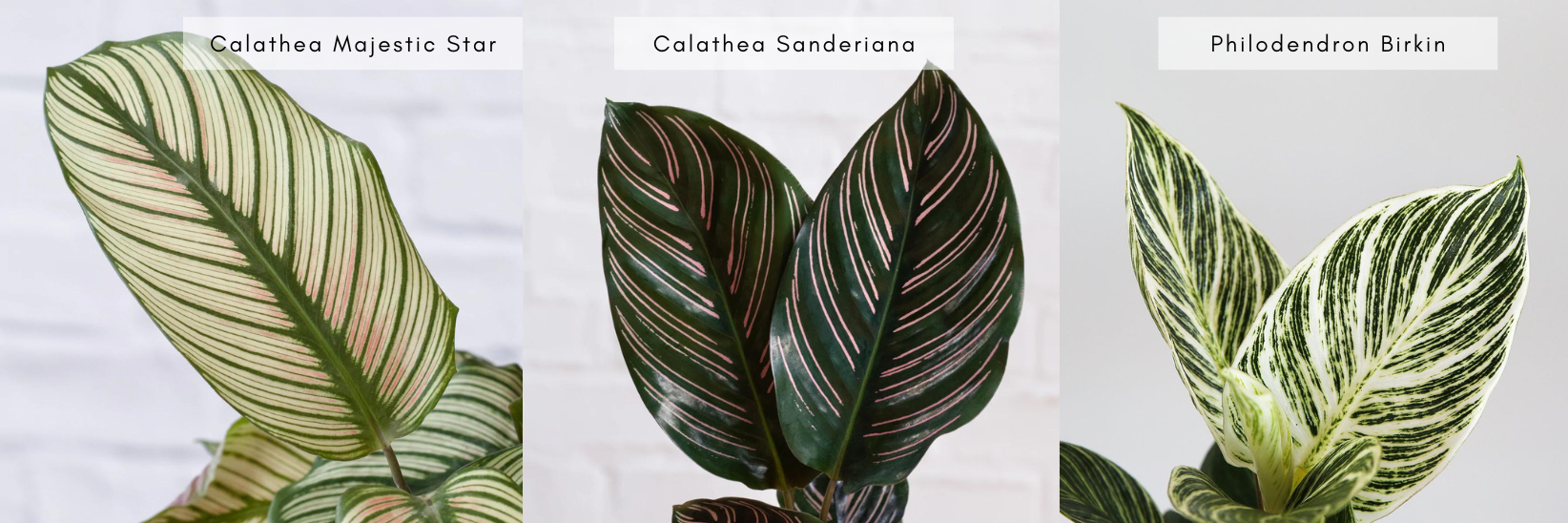
Spotted Variegation
Small spots or dots of variegation scattered across the leaf surface. This is quite a common form of variegation.
Plants with Spotted Variegation:
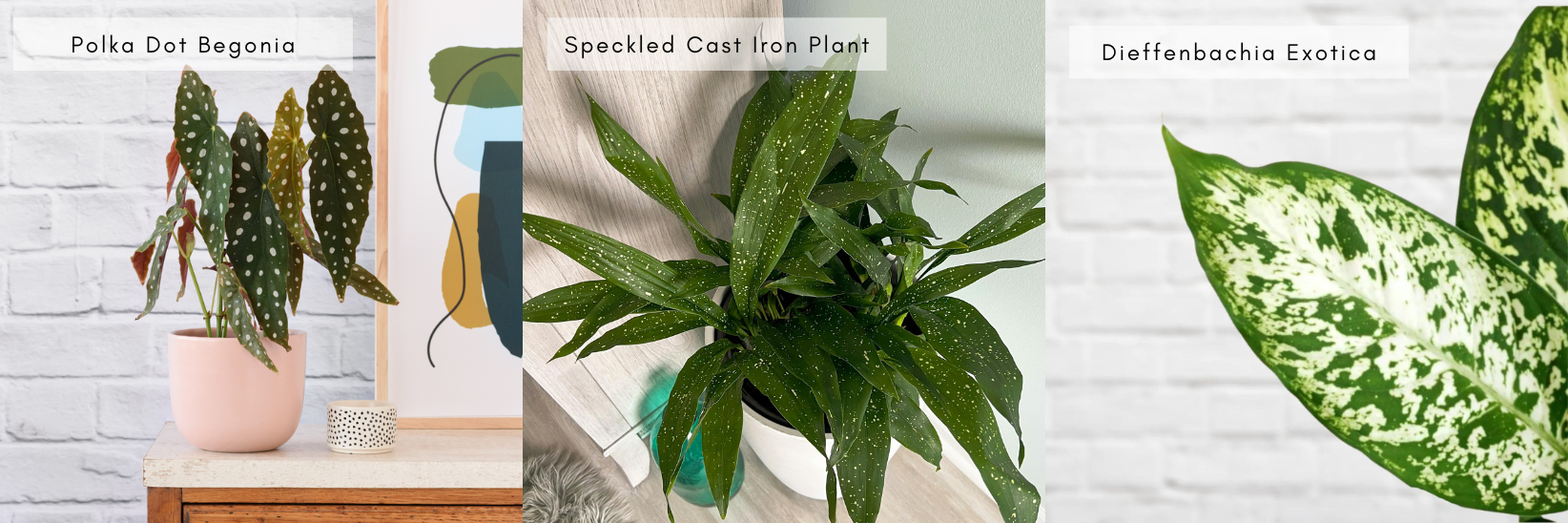
What are the causes of Variegation in Houseplants?
Here, we'll zoom in on what makes plants get all variegated and funky. We'll check out how different things stir up the mix and create those cool leaf patterns.
Environmental factors
Light Intensity
When plants receive uneven sunlight, they may develop a variety of colours or patterns on their leaves. This occurs because different parts of the plant produce different amounts of chlorophyll based on the amount of light they receive, giving leaves their green colour. So, when some parts receive more light than others, they produce more chlorophyll, resulting in more green leaves, whereas the opposite is true for leaves exposed to less or lower levels of light!
Temperature Fluctuations
Plants respond to extreme temperature swings in a variety of ways, one of which is to produce variegated leaves. Why? Well, when temperatures go haywire, plants get stressed out. As a survival strategy, they produce more or less chlorophyll, the green pigment found in leaves. This can result in unusual patterns in the leaves due to varying amounts of chlorophyll production in different parts of the plant.
Nutrient Imbalances
When plants do not receive the proper nutrients or they are unevenly distributed within the plant, particularly nitrogen, phosphorus, or magnesium, they struggle to produce enough chlorophyll. This can cause patterns in the foliage because certain parts of the plant receive more or less of these essential nutrients. Variegation occurs as a result of nutrient tug-of-war within the plant. This could be an indication that your plant requires a more balanced diet.
Viral Infections
Certain viral infections in plants can mess with chlorophyll production and distribution, causing variegation. These viruses disrupt normal plant processes, affecting how chlorophyll is made and moved around. Some viruses even hijack plant cells to produce abnormal pigments, leading to unique colour patterns. So, when you see variegated leaves, it could be nature's way of signalling a viral infection. It's like a botanical mystery novel, with viruses playing the role of mischievous plot-twisters!
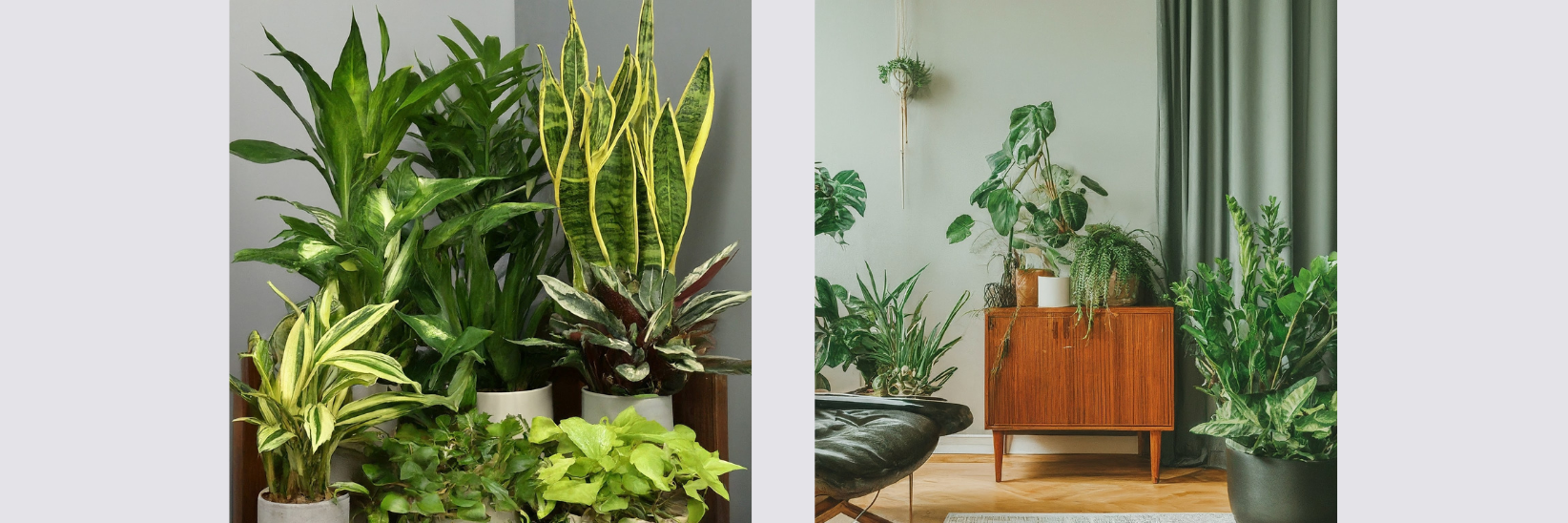
Genetic Mutations (including Chimeral Variegation)
Consider your plant's DNA to be a recipe book, complete with instructions for producing chlorophyll — the green pigment that powers photosynthesis. Occasionally a random change occurs in the DNA, like a typo or a missing ingredient in that recipe. These changes are known as 'mutations' . A common type is a somatic mutation, which happens in individual cells rather than the plant’s reproductive cells.
These mutations can throw off the chlorophyll “recipe,” causing some cells to produce less (or no) chlorophyll at all. This is why you’ll sometimes see beautiful streaks, marbled areas, or creamy-white patches on the leaves. It’s like mixing icing and adding food colouring without stirring properly — some areas stay pure white, while others take on bits of colour.
One of the most common forms of genetically driven variegation is called chimeral variegation — where two or more genetically distinct types of cells grow side-by-side in the plant’s tissue. This cellular mosaic creates the visual patterns we admire in many variegated plants.
Depending on how these mutated and normal cells are layered within the plant, variegation can appear in different forms:
-
Periclinal Chimeras – The most stable type, where an entire layer of tissue is genetically different (e.g. Ficus elastica ‘Tineke’).
-
Sectorial Chimeras – Large wedge-like sections of variegation (e.g. Philodendron Pink Princess).
-
Mericlinal Chimeras – Unstable patches that may disappear or shift over time (e.g. Sansevieria ‘Laurentii’ - The Common Mother-in-Law's Tongue).
Popular variegated plants like Monstera deliciosa ‘Albo-Variegata’ and Philodendron White Princess are classic examples of chimeral variegation.
Note: Because these mutations affect only certain cells and not the whole genetic line, they usually can’t be passed on through seed. Instead, they must be preserved through propagation using cuttings that include the mutated tissue.
Different Cultivation Techniques that cause Houseplant Variegation
Cultivating variegated plants is a wonderful way to produce more of the same mutation! It starts with finding plants that have naturally occurring mutations, which can happen because of genetic changes or environmental factors like sunlight or temperature. Once these special plants are discovered, growers use methods like cuttings or tissue culture to make more of them.
WHAT IS TISSUE CULTURE
Large-scale growers frequently use tissue culture, a method of propagation that produces plants in a controlled, sterile environment. It allows for the mass production of plants from small pieces of tissue, such as a leaf or stem, under sterile conditions, resulting in genetically identical clones of the original plant.
Imagine taking a piece of a variegated plant and giving it a chance to grow into a whole new one—it's like cloning in the plant world! Growers might also breed different plants together to create even more variegated varieties or to introduce variegation to new types of plants.
The result? A stunning array of plants with eye-catching patterns and colours that stand out in any indoor or outdoor space. It's like playing with a living canvas right in your home or garden! These variegated plants not only add beauty but also bring diversity to landscapes, making them more vibrant and interesting.
So, the next time you admire a plant with funky stripes or patches of colour, remember that it's the result of careful cultivation and a little bit of nature's magic. It's proof that sometimes, imperfections can make things even more beautiful!
Viral infections that can cause variegation in houseplants
Below, we’ll briefly look into certain varieties of viruses that cause variegation in houseplants and how to spot them.
Tobacco Mosaic Virus (TMV) manifests as mosaic patterns on leaves, interrupting chlorophyll production and resulting in variegation. Symptoms include mottling, stunted growth, and distorted leaves. Infected plants may exhibit yellowing or necrosis (decay). To spot TMV, look for distinctive mosaic-like patterns. It can weaken plants, reduce yield, and render them susceptible to secondary infections.
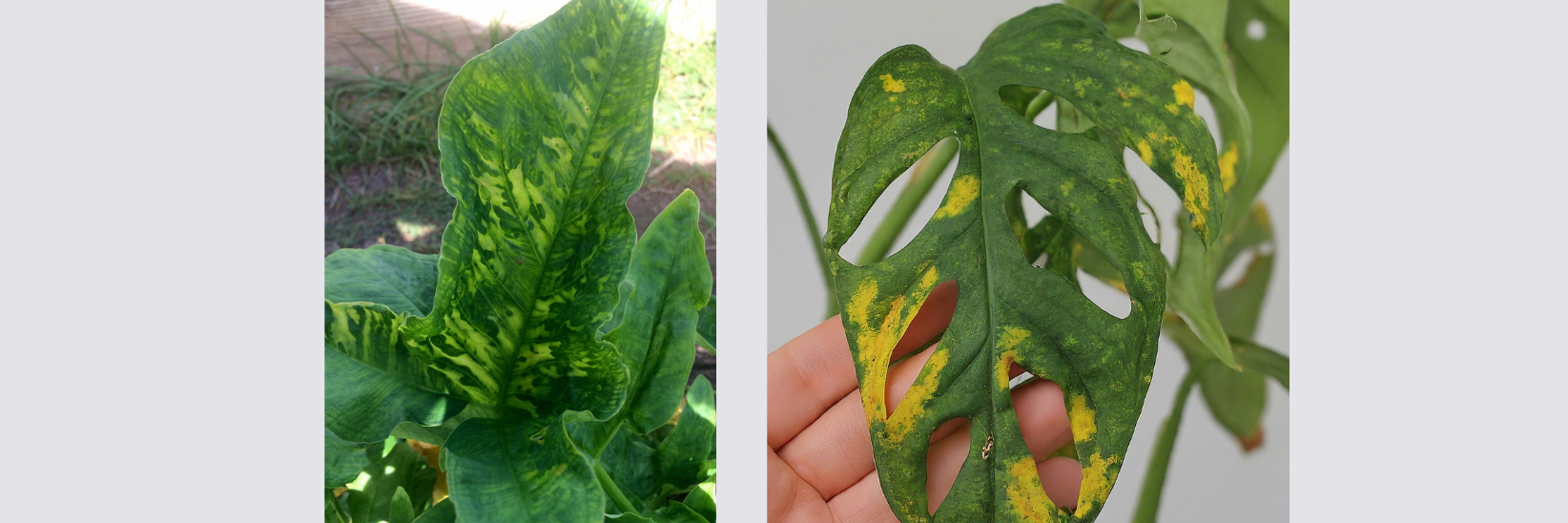
Cucumber Mosaic Virus (CMV) triggers variegation, leading to mottled or streaked foliage by disrupting chlorophyll distribution in infected plants. Symptoms include yellowing, stunted growth, and distorted leaves. Look for irregular patterns and discoloration. CMV weakens plants, reduces yield, and can lead to severe damage if left untreated. Early detection and management are crucial.
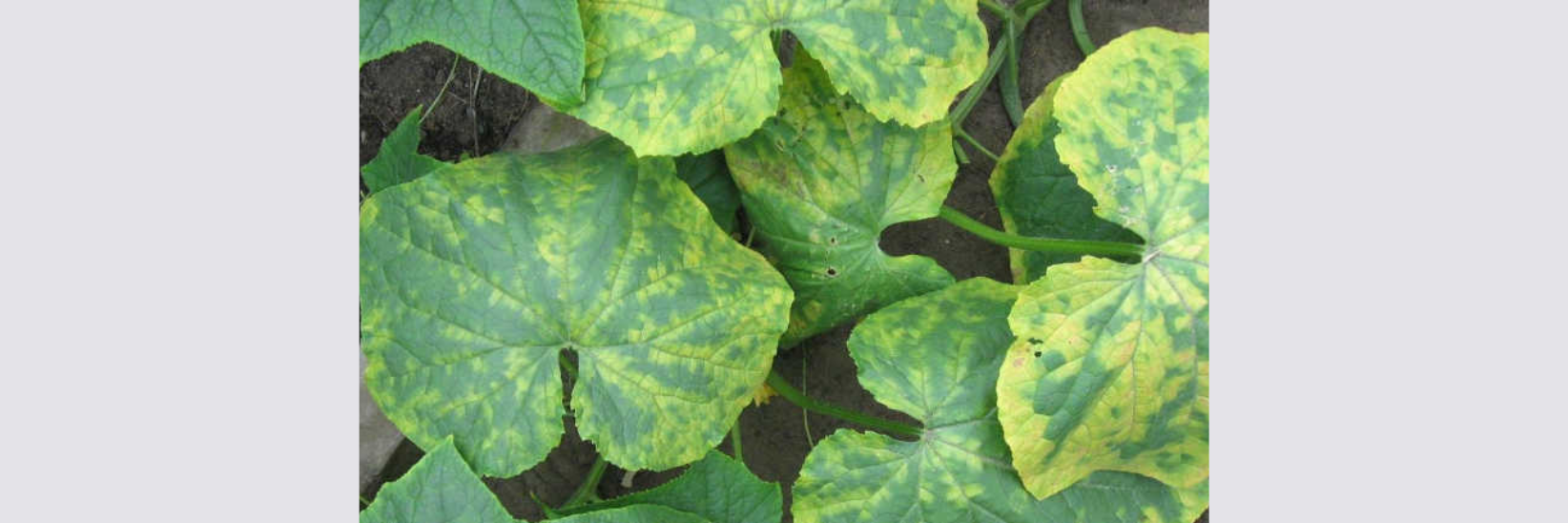
Houseplants that can get Tobacco Mosaic Virus (TMV) and Cucumber Mosaic Virus (CMV) include:
- Spider plant (Chlorophytum comosum)
- Peace lily (Spathiphyllum spp.)
- Rubber plant (Ficus elastica)
- Philodendron (Philodendron spp.)
- Pothos (Epipremnum aureum)
- Snake plant (Sansevieria spp.)
- ZZ plant (Zamioculcas zamiifolia)
- Dracaena (Dracaena spp.)
These are just a few examples, as TMV + CMV can potentially affect a wide range of plant species. It's essential to practise good hygiene and avoid exposing susceptible plants to potential sources of TMV contamination, such as tobacco products or infected plants.
Impatiens Necrotic Spot Virus (INSV) induces variegation, resulting in irregular leaf colouration and patterns. Look for discoloured, decaying lesions on leaves and stems. INSV weakens plants, causing stunted growth, leaf distortion, and reduced flower production. Early detection is key to preventing spread; infected plants should be promptly removed and disposed of to prevent further contamination.
This virus primarily affects plants in the Impatiens genus, however can be easily spread to common houseplants.
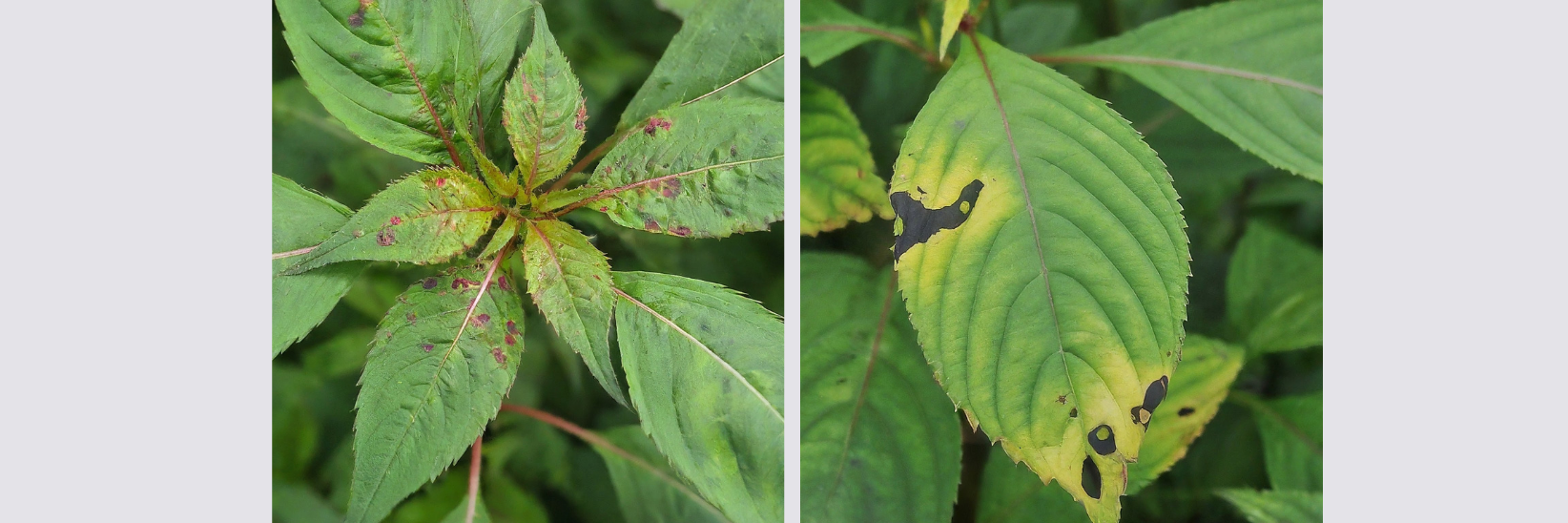 Dasheen Mosaic Virus (DsMV) causes variegation, leading to mottled, patchy leaf colouration with light and dark green or yellow areas. Affected plants may also show distorted growth, leaf curls, and reduced growth. While the variegation may appear decorative, it is a symptom of viral infection that compromises plant health.
Dasheen Mosaic Virus (DsMV) causes variegation, leading to mottled, patchy leaf colouration with light and dark green or yellow areas. Affected plants may also show distorted growth, leaf curls, and reduced growth. While the variegation may appear decorative, it is a symptom of viral infection that compromises plant health.
This virus primarily affects members of the Araceae family, including Colocasia, Alocasia, Xanthosoma, Caladium, Dieffenbachia, and Philodendron, and is easily spread through contaminated tools, sap exchange, or insect vectors like aphids. Infected plants should be removed and destroyed to prevent further spread.

Orchid Fleck Virus (OFV) causes irregular variegation in the form of chlorotic spots, streaks, or flecks on leaves, which may resemble natural patterning but are signs of viral damage. Infected orchids can experience reduced vitality, distorted growth, and diminished flowering over time. Symptoms may be subtle at first, making early detection challenging.
This virus primarily affects a variety of orchid species but can also be transmitted to other ornamental plants. OFV is spread through sap, often via contaminated tools or mites. There is no cure—infected plants should be isolated or destroyed to prevent transmission.

Signs of Viral Infection:
- Irregular, blotchy patterns across leaves
- Leaf distortion or curling
- Slower or stunted growth
- General decline in plant health
Unlike genetic variegation, viral infections can spread to other plants and are often irreversible. If suspected:
- Isolate the plant immediately
- Avoid propagation
- Sterilize tools to prevent contamination
Caring for Variegated Houseplants
Variegated houseplants, with their eye-catching patterns and colours, require special care to thrive and retain their distinct appearance. Here's a comprehensive overview:
Light Requirements
Most variegated plants require the brightest, indirect light possible, with occasional bursts of direct, soft sunlight to keep their colours vibrant. The best positions we have found are in east- or west-facing rooms where the plant will receive soft, direct sunlight for about 1 - 3 hours. Avoid direct sunlight during the hottest parts of the day, as well as placing your plants on a windowsill with direct light, as both can cause leaf burn.
Watering Frequency
This is plant-specific, and you should always do extensive research on the care requirements for any of your houseplants. However, it is a good rule of thumb to water variegated plants with large sections of variegation slightly less than their green counterparts to avoid brown patches, which are more susceptible to root rot from overwatering. Checkout our Plant Care Guides.
Soil Preferences
As with most potted plants, drainage is critical. This is especially true for variegated plants. To avoid root rot and brown patches, give your plants a suitable and well-drained potting mix. Be sure to check the basic moisture levels your specific plant requires when choosing your baseline soil. EG: If your plant requires consistent moisture, e.g. Palm Peat is a good choice.
KEEP IN MIND: Variegated plants require less frequent repotting compared to common green houseplants due to their slower growth. This results in lusher, happier plants with stable variegation. Remember this when caring for your variegated beauties, as less disturbance means more vibrant and resilient foliage.
Temperature Considerations
As we now know, temperature can play a vital role in variegation. Consistency is key, so avoid exposing your plants to drastic temperature fluctuations and try to keep them between 18°C and 27°C for the best results. Tip: Avoid windowsills where temperature fluctuations can be extreme.
Reversion in Variegated Houseplants
Variegated plants pose unique challenges in maintaining their striking appearance. Here are some things to keep an eye out for and what to do.
Preserving variegation stability is critically important if you want to keep the plant looking as beautiful as when you received it. Over time, some leaves may return to their original, non-variegated state; this can be normal but might be a sign of something else.
To prevent reversion, achieving balance is essential. Avoid extreme conditions, and ensure the plant gets sufficient light and nutrients. Insufficient light or overfertilisation can trigger reversion, causing variegated plants to revert to solid green.
Regular monitoring is key. Keep an eye on the plant's growth and coloration, pruning any reverted sections promptly to maintain the desired variegated pattern.
By understanding these challenges and implementing appropriate care measures, you can help your variegated plants thrive and retain their unique beauty for years to come. Remember, a little extra attention goes a long way towards preserving their captivating patterns.
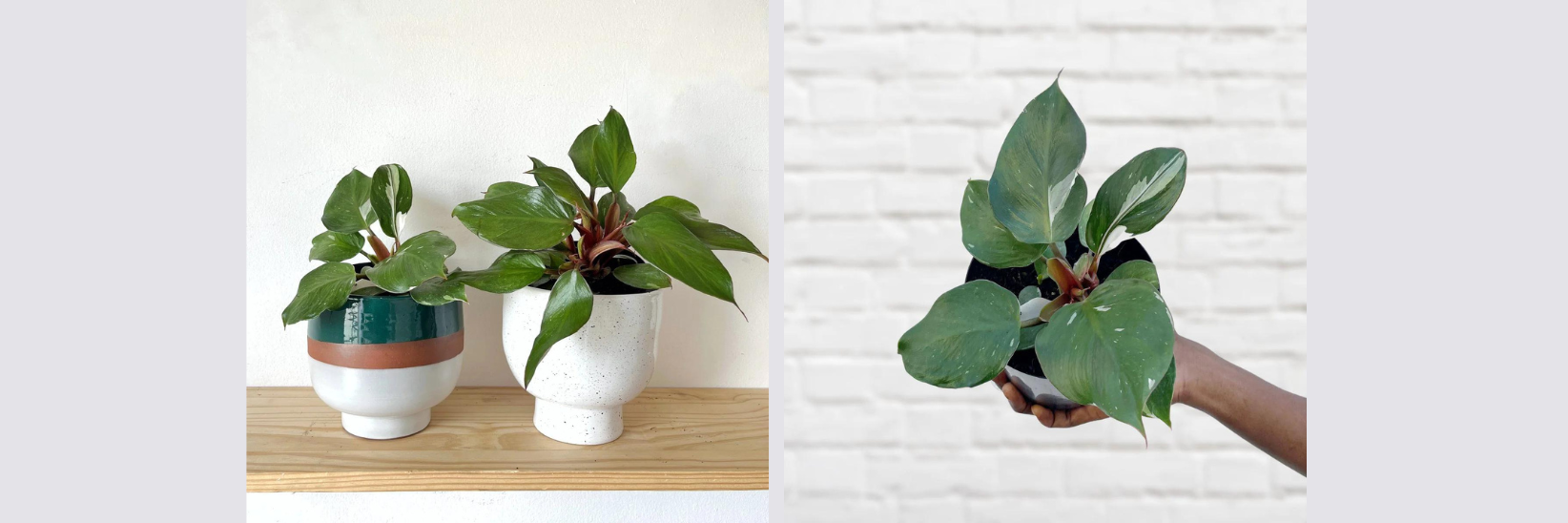
Early Signs of Houseplant Reversion
- Changes in Leaf Colour: Watch out for leaves that lose their variegation and revert to a solid green colour. This can indicate that the plant is reverting to its non-variegated form.
- New Growth: Pay attention to the appearance of new leaves. If they lack variegation or have less pronounced variegation compared to older leaves, it may signal reversion.
Can you get a reverted plant to be variegated again? No, you cannot reverse reversion; however, optimal conditions such as light, water, nutrients, and pruning may promote variegated growth. However, a full return to variegation is not guaranteed.
Excess White Leaf Production in Variegated Houseplants
What happens if your variegated plant produces an abundance of white leaves? It could indicate a number of issues:
- Insufficient Light: White or pale leaves may suggest that the plant isn't getting enough light. Variegated plants need bright, indirect light to develop their characteristic colours. Move the plant to a brighter location, but avoid direct sunlight, which can scorch the leaves. This can be the same for leaves reverting to plain green.
- Nutrient Deficiency: Variegated plants may require more nutrients to produce vibrant foliage. Consider fertilising your plant with a balanced fertiliser formulated for houseplants. Follow the manufacturer's instructions for application frequency and dosage.
Top Tip: Feed variegated plants at regular intervals as they have less chlorophyll to produce their own energy.
- Variegation Stability: Some variegated plants are inherently unstable and tend to produce more white or non-variegated leaves. Prune away excessively white leaves to encourage the growth of variegated ones and maintain the plant's aesthetic appeal as well as it’s health. Plants with an abundance of white leaves can be weaker than their green counterparts.
- Genetic Factors: In some cases, excessive white leaves may be a result of the plant's genetics. Certain variegated cultivars may naturally produce more white or pale leaves than others. These are often forms with stable variegation.
- Temperature Stress: Extreme temperature fluctuations or exposure to cold drafts can stress the plant, leading to the development of white or pale leaves. Ensure the plant is kept in a stable temperature range.
By addressing these potential issues and providing the best possible care, you can help your variegated plant produce a balanced mix of green and white leaves for a stunning visual display.
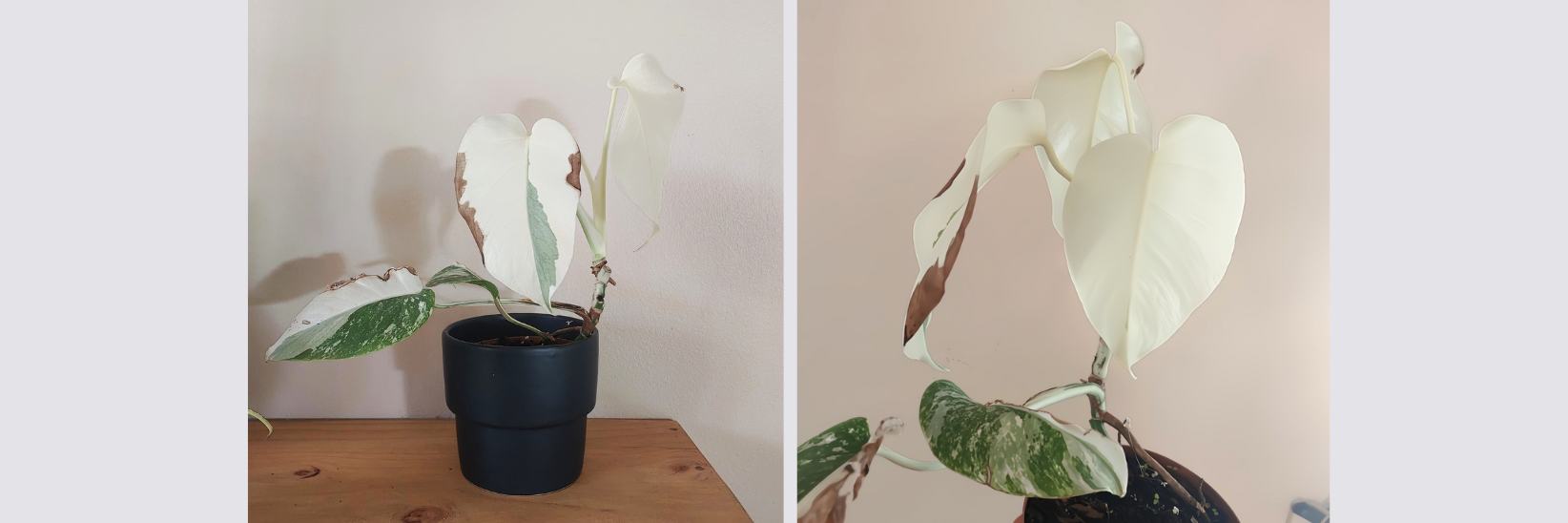
4 tips for Styling with Variegated Plants
Styling with variegated plants offers endless possibilities to enhance your space with vibrant foliage. Here are some creative ideas to incorporate these botanical beauties into your decor:
- Choose a Statement Piece Use a large variegated plant, such as a Monstera deliciosa or Dieffenbachia, as a focal point in any room. Its striking patterns and colours will instantly draw attention and add a touch of elegance to your space.
- Mix and Match: Grouping variegated plants of varying sizes, shapes, and textures can add visual interest. Otherwise, combine them with solid green plants or contrasting foliage to create a dynamic display that adds depth and dimension to your decor.
- Hanging Gardens: Hang variegated trailing plants like variegated Pothos or Spider Plants in Macramé plant hangers or decorative pots to add a whimsical touch to your space. These hanging gardens can transform any corner into a lush oasis.
- Terrariums and Succulent Gardens: Incorporate variegated succulents or small foliage plants into Terrariums or succulent gardens for a low-maintenance yet stylish centrepiece. Their unique colours and patterns will create a captivating focal point on your tabletop or shelf.
With these styling ideas, you can showcase the beauty of variegated plants and transform your space into a lush and inviting sanctuary. Let your creativity bloom and enjoy the endless possibilities of styling with variegated foliage!
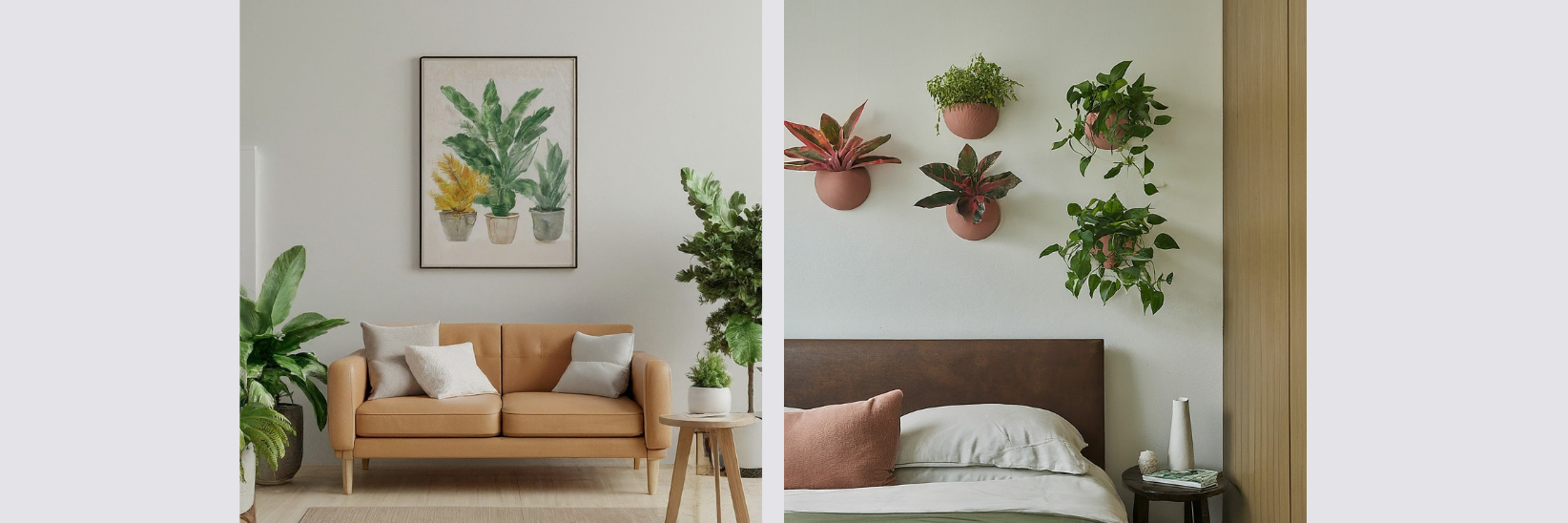
In Conclusion
Finally, delving into the captivating world of variegated houseplants reveals not only their aesthetic appeal, but also the intricate interplay of genetics and environmental factors that shapes their foliage. Understanding the origins of variegation and the challenges it presents allows enthusiasts to confidently cultivate and style these botanical gems. Variegated plants provide limitless opportunities for creativity and expression, whether they are used to decorate living spaces as statement pieces or incorporated into hanging gardens and terrariums. Accept the uniqueness of variegation and let these stunning foliage patterns bring life to your home or office, transforming it into a vibrant and inviting green oasis.
We would love to hear about your variegated plant care tips and tricks, or if you have any funky styling suggestions. Pop them in the Comment Section below.





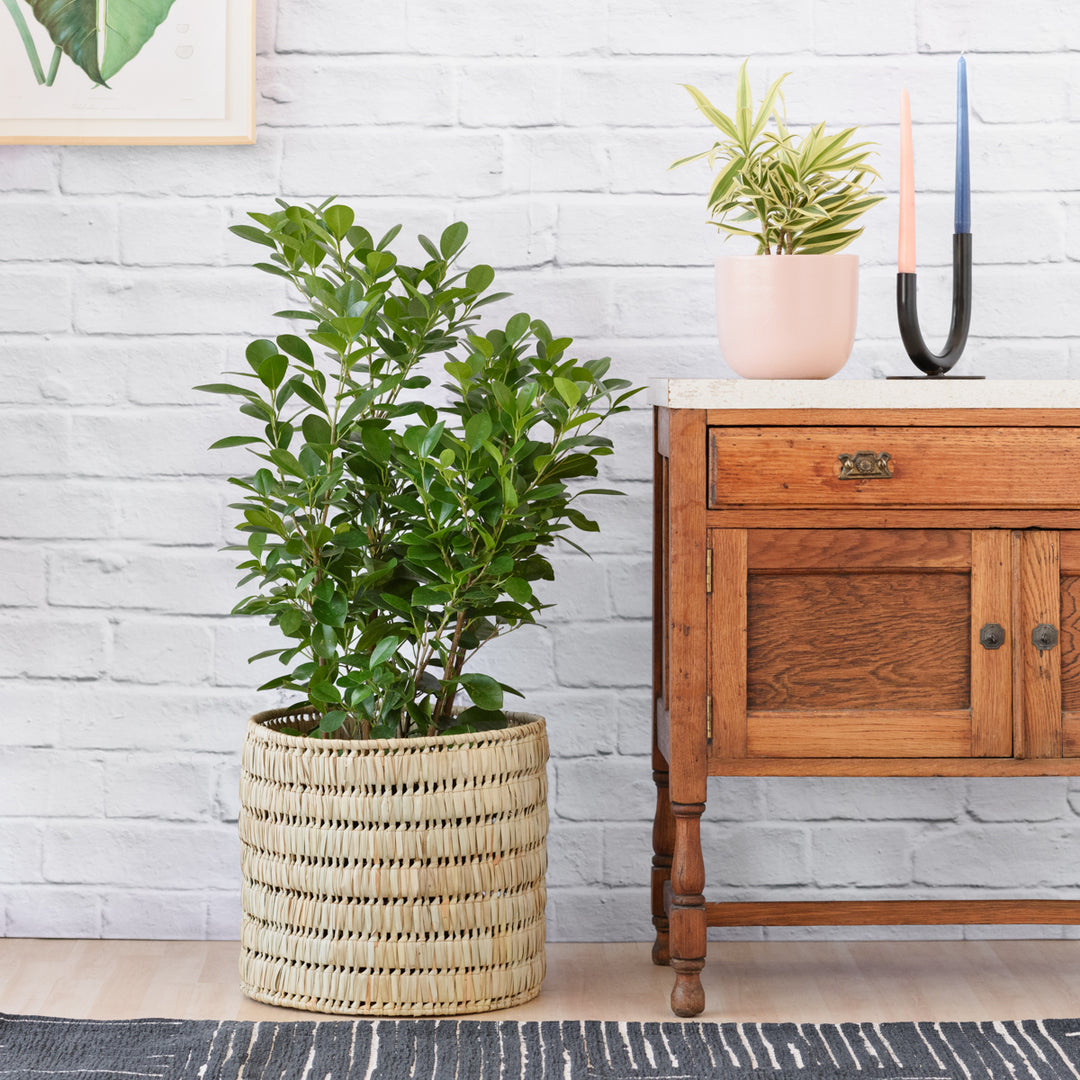
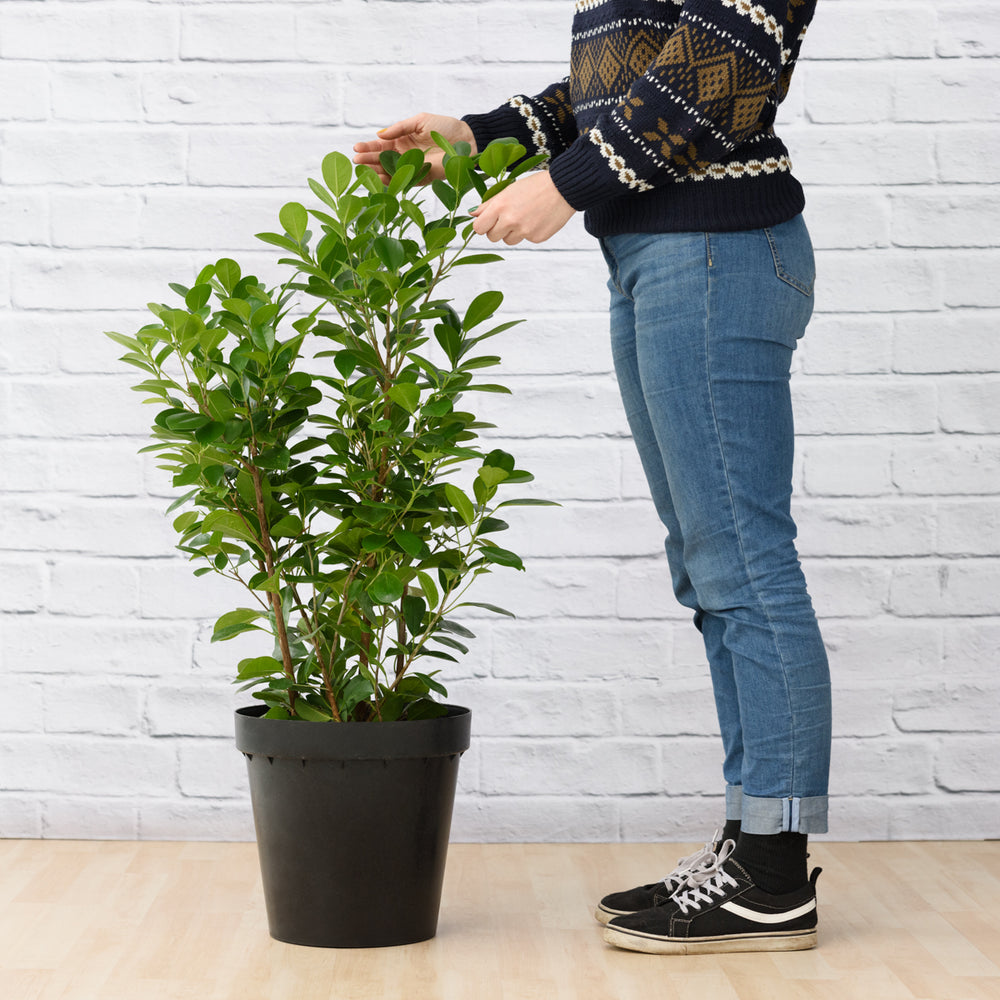

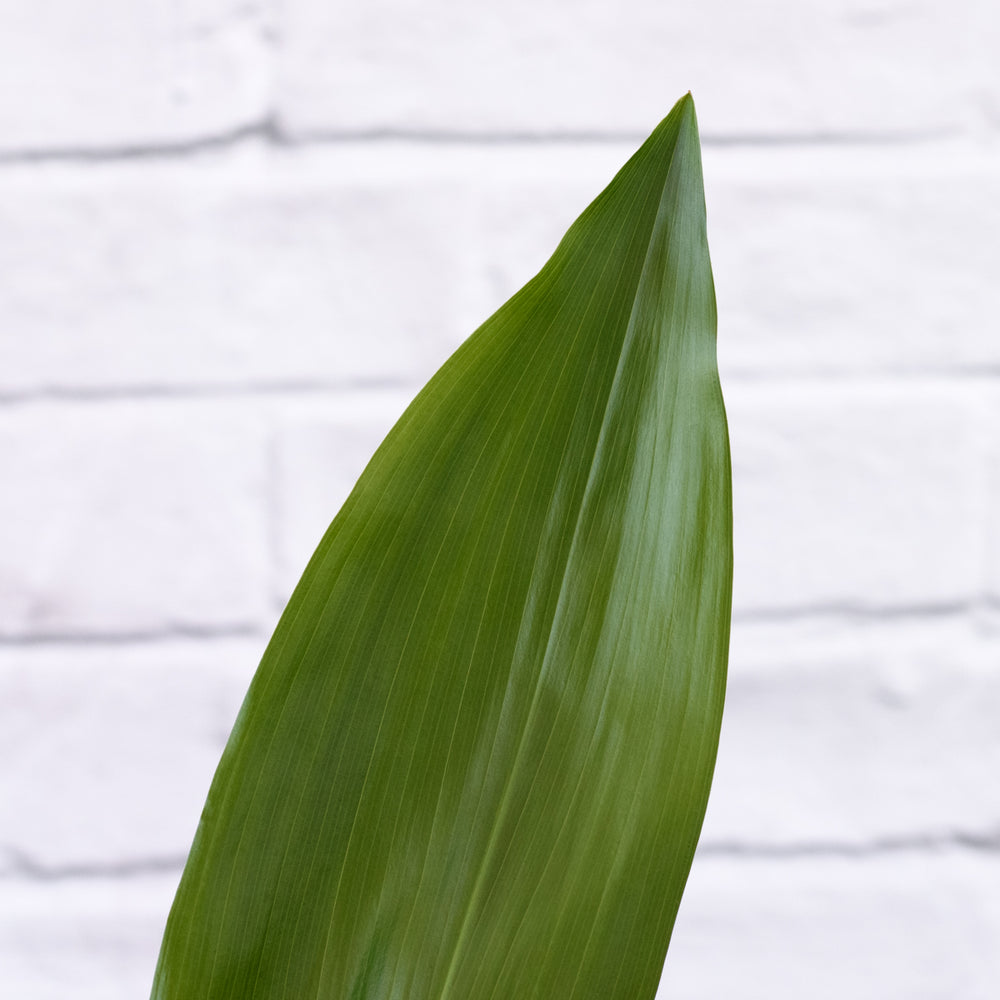
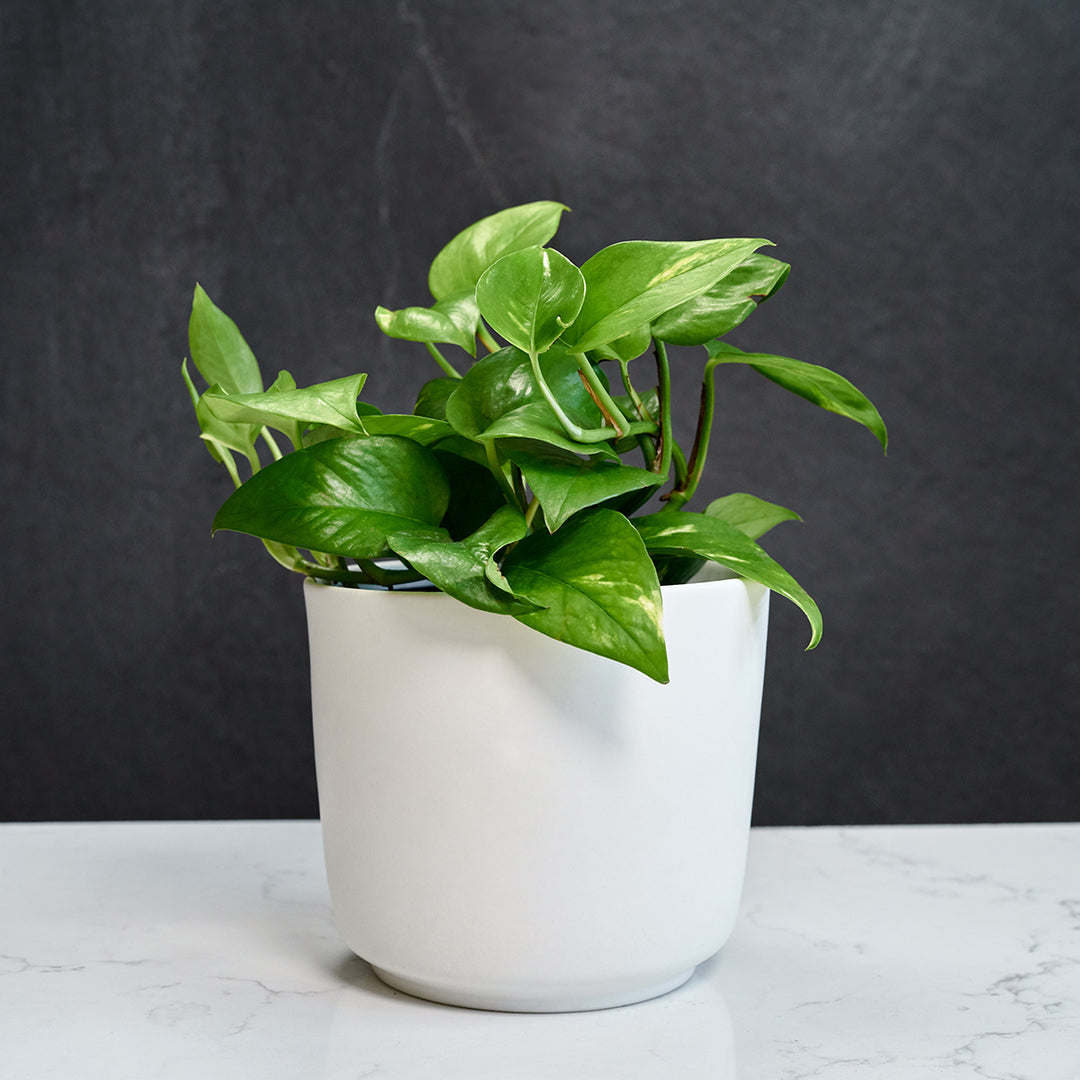
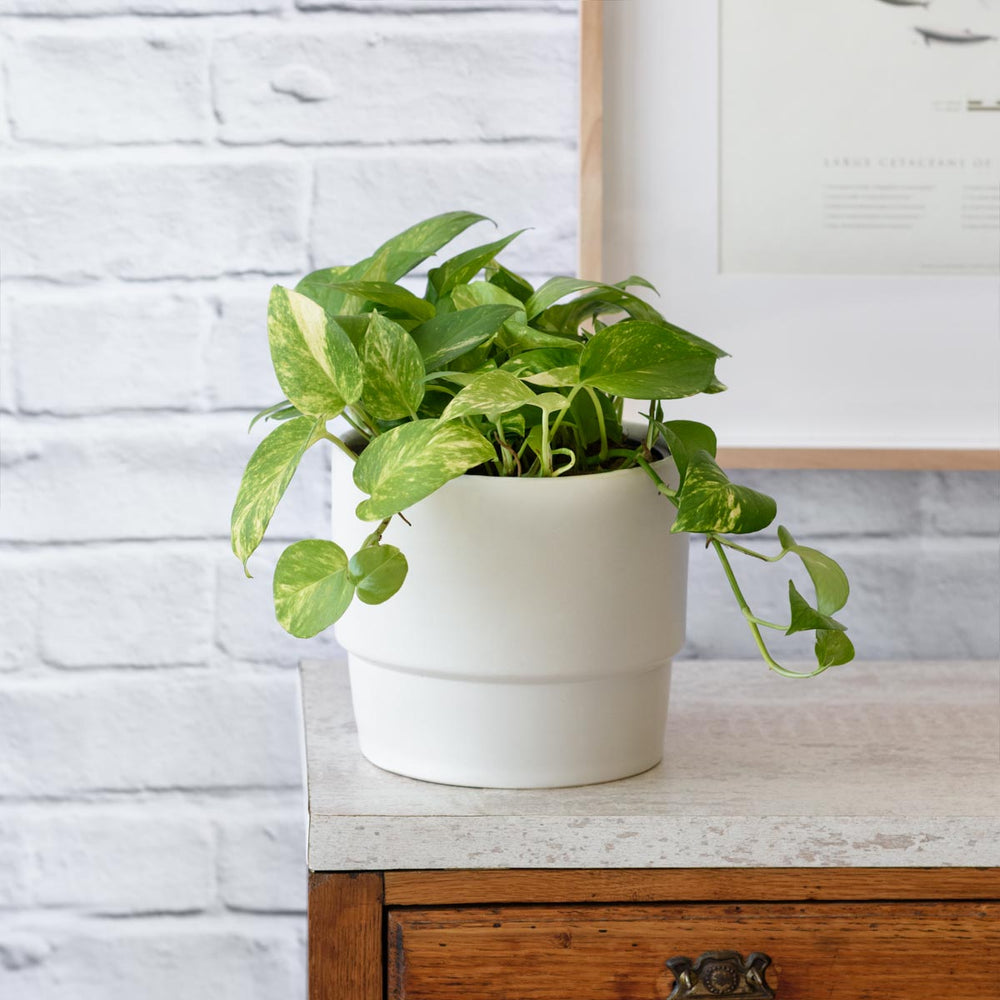

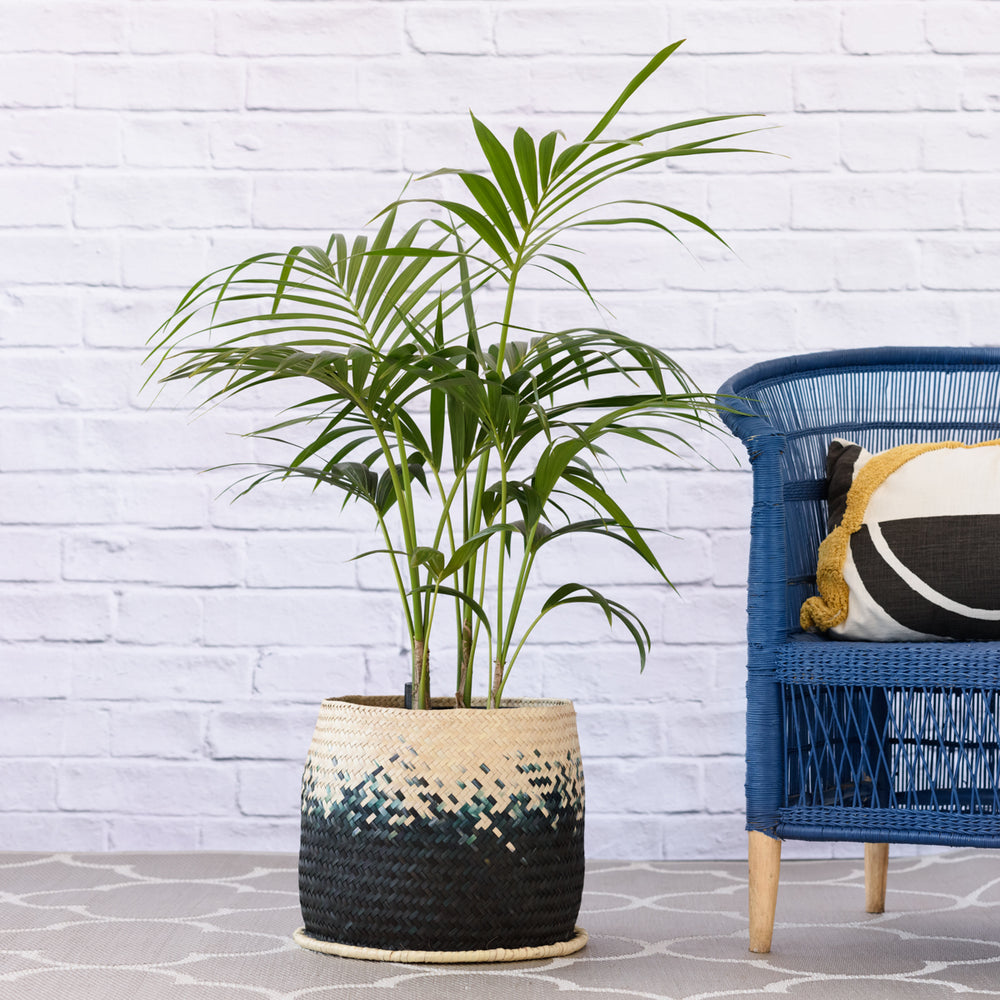

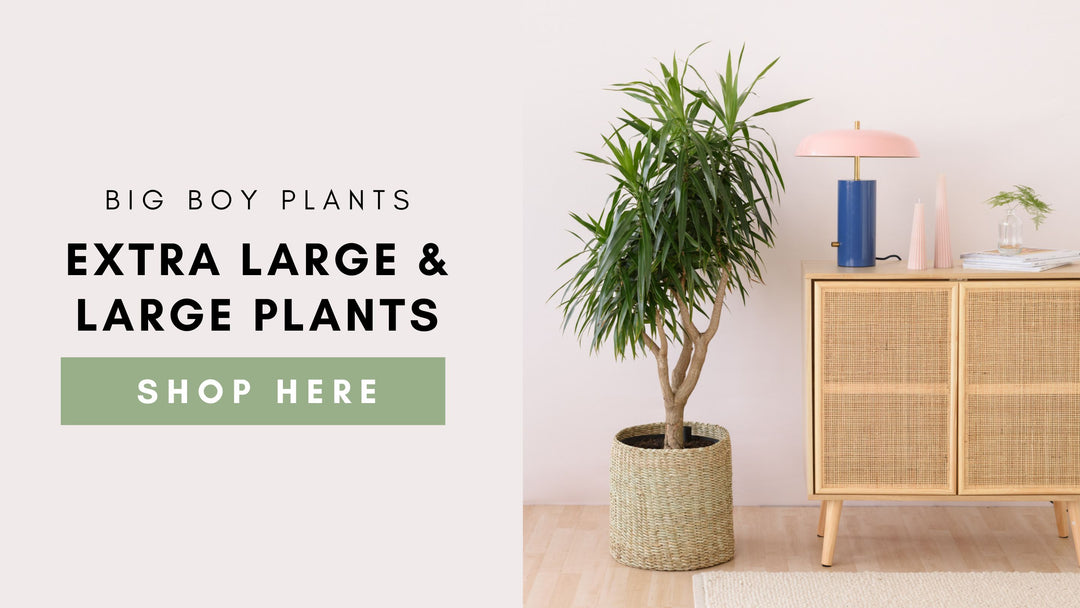
Leave a comment